In 2020, due to COVID-19, global economic growth will be slow. Many regional restaurants have put forward instructions for banning dine-in in order to better prevent the COVID-19. Therefore, takeaway packaging will meet a great demand in this period.
As Americans isolate themselves in response to the COVID-19 outbreak, there has been a definitive surge in the demand for takeaway packing for food delivery. Apps like Uber Eats and Grubhub have seen a significant uptake in orders placed and have become a lifeline for struggling restaurants. Many food delivery apps have even changed their policies and waived delivery fees to further encourage people to stay home.
In a restaurant, cross-contamination is the transfer of bacteria or other harmful microorganisms from food, equipment, or people, to food. This can happen during any stage of food production, including the packaging of food for takeout and delivery. Proper food takeaway packaging, such as tamper-proof containers, keeps food safe from any cross-contamination that might occur when during the transfer of food from a restaurant to the customer – something that’s especially important in slowing the spread of the novel coronavirus.
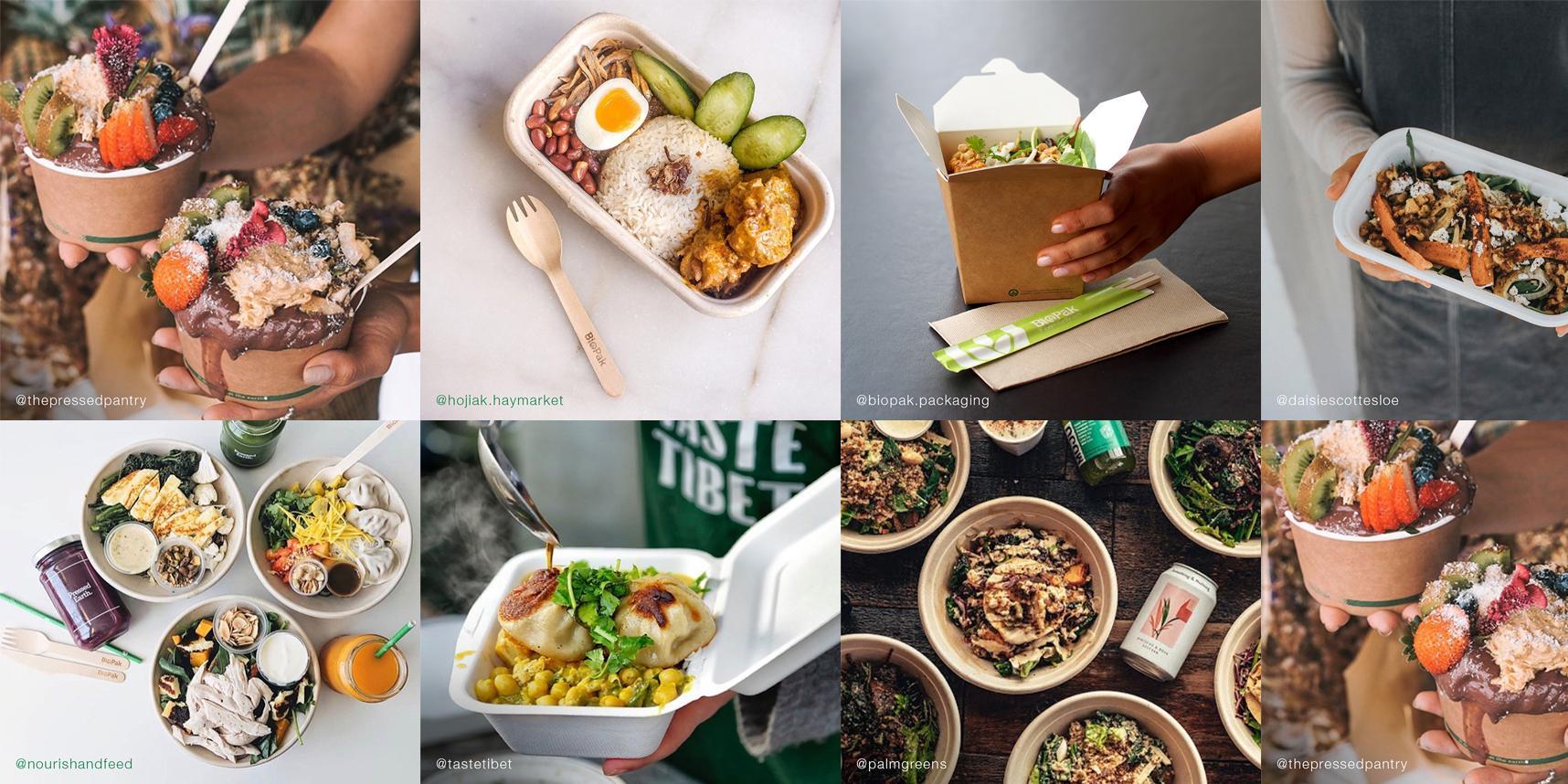
Imagine this: You order your favorite meal online from a local restaurant, and thirty minutes later it arrives…cold.
How do you feel?
If you’re ravenous, you may eat it. But chances are you’ll probably feel unhappy about the entire experience. Will you be rushing to order from that restaurant again?
Probably not.
For the restaurateurs on the other end of this equation, the best way to resolve this kind of scenario is to start with proper takeaway packaging. The right restaurant food packaging helps keep your food warm, intact, and ready-to-eat from your kitchen all the way to your diner’s door.
Furthermore, fast food restaurants, such as Burger King and Subway, have ramped up advertising campaigns to promote free delivery and encourage patrons to order their favorite meals right to their door, making food accessible while maintaining social distancing.
Thus, takeaway packaging for e-commerce shipments that are emerging as lifelines in this new world. Such changes are presenting many packaging companies with a new set of challenges. In this article, we present a four-step plan to help you know more about takeaway packaging from different areas, such as packaging for takeaway food, takeaway food packaging situation now, etc…
Takeaway food packaging
With food takeaway packaging being the packaging industry’s largest area of activity, the $900 billion per year worldwide industry is on the front lines.
Packaging for takeaway food
Food takeaway deliveries have boomed in the past decade. With smartphone apps came a seamless, centralized formula of on-demand buffets at home, and a small army of box-bagged, traffic-dodging deliverers mobilized at the tap of a screen. A report released in 2019 valued the global online food delivery and takeaway market at over $53bn.
Takeaway packaging is now more diverse than in the past, and there are many different types of takeaway packaging available to fast food outlets. These can range from biodegradable materials such as Bagasse or wood, paper, and card, to recycled materials such as polypropylene and PET.
Common materials used for food takeaway packaging
# Bagasse
Bagasse is one of the newest forms of container material and is rapidly replacing Styrofoam as the most popular. It is made from sugar refining waste products, principally the stalks of sugar canes which are removed during refining. These stalks are then compacted and processed, and result in a very strong and secure container that is also biodegradable. As it is both eco-friendly and made from recycling products, companies can proudly display their environmental credentials with these boxes.
#PET
PET is recycled plastic, made from plastic that has already been used once as packaging. The material is cleaned and sorted and then turned back into food-safe containers including cups, bowls, and other materials. There is some debate about whether PET can be repeatedly recycled, but PET is now becoming more popular and is reused again and again. Salad containers, bowls, and sandwich wedges are all made from recycled PET.
# Polypropylene
Polypropylene is another recycled material, made from thermoplastic. It is commonly used in containers that need to be tamper-resistant, in sealed food bags, and in containers that can be used in the microwave. It is also used for other cooking devices, including chopping boards. While this cannot be recycled, it is more environmentally friendly than single-use plastic containers.
(Souce: https://www.takeawaysupplies.co.uk/blog/materials-used-in-takeaway-packaging/)
Environmental impact of these common food takeaways packaging
# 1 Styrofoam
Ubiquitous clamshell box for restaurant leftovers, hot-and-sour soup containers, coffee cups, and various hawker foods.
Most research discloses that Styrofoam becomes a permanent part of our environment after we use it. Information on the health risks of styrene, which is intrinsic to the manufacture of polystyrene plastics and resins, can be found on the EPA website.

It’s also sadly one of the top container materials in Asia because they are the cheapest of all types of disposable ware and cost two to three times less than alternatives. Because they break so easily, absorb foods, and are unstable, they are not suitable for multiple usages.
# 2 Plastic containers
Widely used in deli salads, sandwich boxes, sushi takeaway, yogurt containers, sauce containers; big soda cups at convenience stores, bubble tea.
Plastic is made from petroleum, a resource in short supply, and we use 4-8% of all global oil for manufacturing plastics. In addition, many chemicals are used to produce plastic resins which serious health risks (the most infamous is BPA but alternatives from the same family such as BPS might not be better). Recycling helps a little (depending on the plastic-type, identifiable by the number on the underside in a triangle it might or might not be recyclable), but too often plastics don’t make it to the right recycling bin, are contaminated from food residue, and provided they do land at a recycling facility, we simply do not have the sufficient infrastructure to recycle the volumes we throw away.
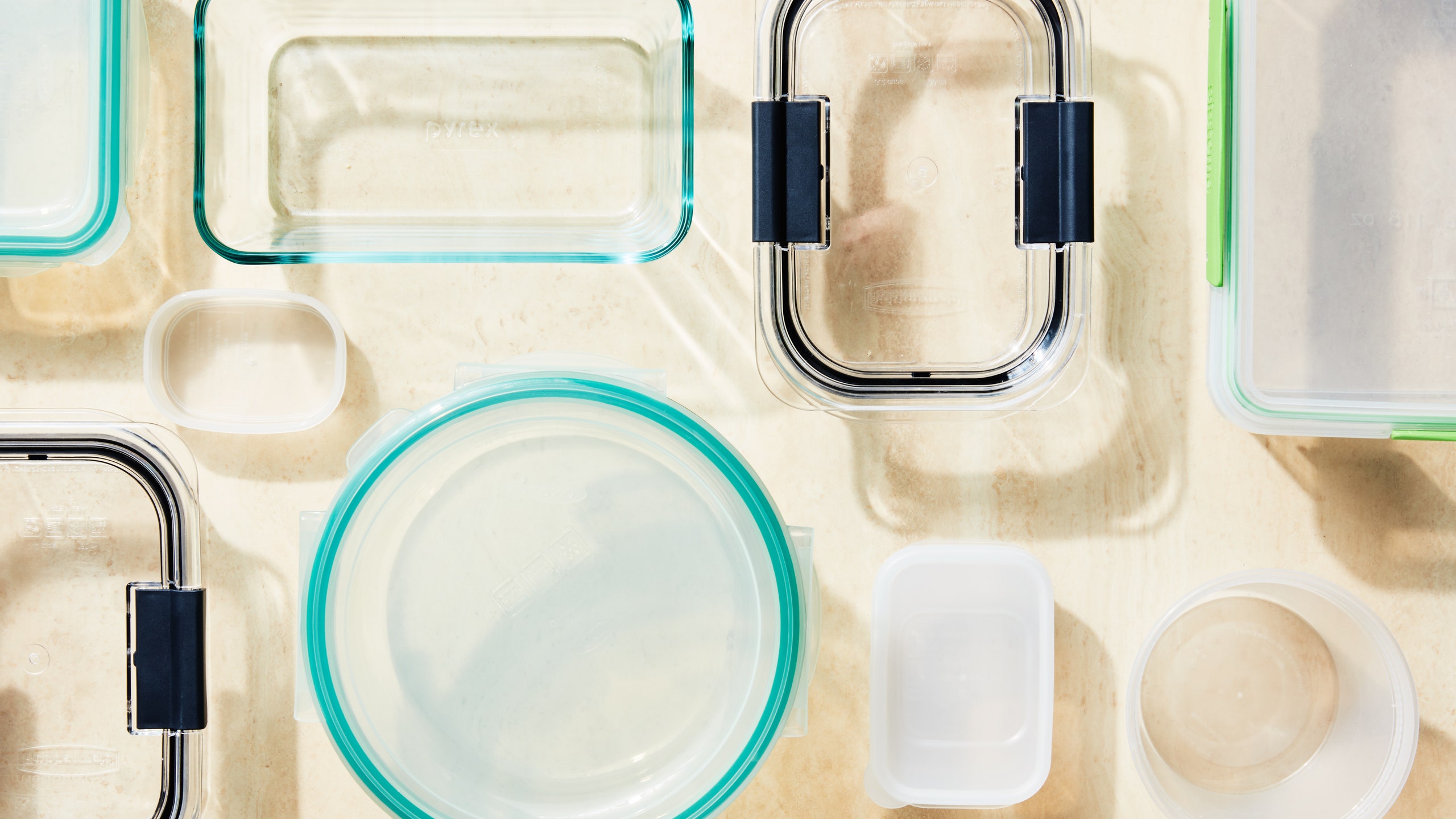
# 3 Plastic Bags
The bakery, fruit stalls at hawkers and food courts, wet markets; hot and cold cup carriers, kopi red-string bags
Plastic bags are the top ocean polluters (among 10 disposable items that represent together 43% of all marine litter). An estimated 100,000 marine animals are killed by single-use bags every year while they are used for an average of 12 minutes only (and a lot less when carrying a take-away from the hawker to the office here in Singapore). Plastic bags also deteriorate faster as they are thinner leaving a lot of micro-plastics we cannot collect. For this reason, we put plastic bags high up on our danger ratings.
# 4 Paper Bags
Paper packaging is essential in minimizing damage to products and extending their useful life. On average, ten times more resources – materials, energy, and water, are invested in products compared to the resources used to produce the packaging used to protect them. Without packaging many of the goods manufactured or food grown would be damaged or spoilt before they reach the consumer.
Paper packaging supports healthy forests. There are serious pressures on natural forests around the world including agriculture, unsustainable logging, mining, infrastructure projects, and increased fire incidence and intensity (WWF 2015). As the demand for paper-based packaging increases, sustainable management of forests is essential.
# 5 Cardboard Boxes
Similar to paper, it depends on the source, and similarly, it can be composted if it has no plastic lining (so no paper cups for instance). We add here – but it’s valid for the paper also – that chlorine is often used, or bleach, which is often harmful to the environment, and chemicals emitted from the paper mills are greater than those coming from the paper itself. Fortunately, they are easily recognizable by their white color vs natural brown so you can make a choice just with your eyes.
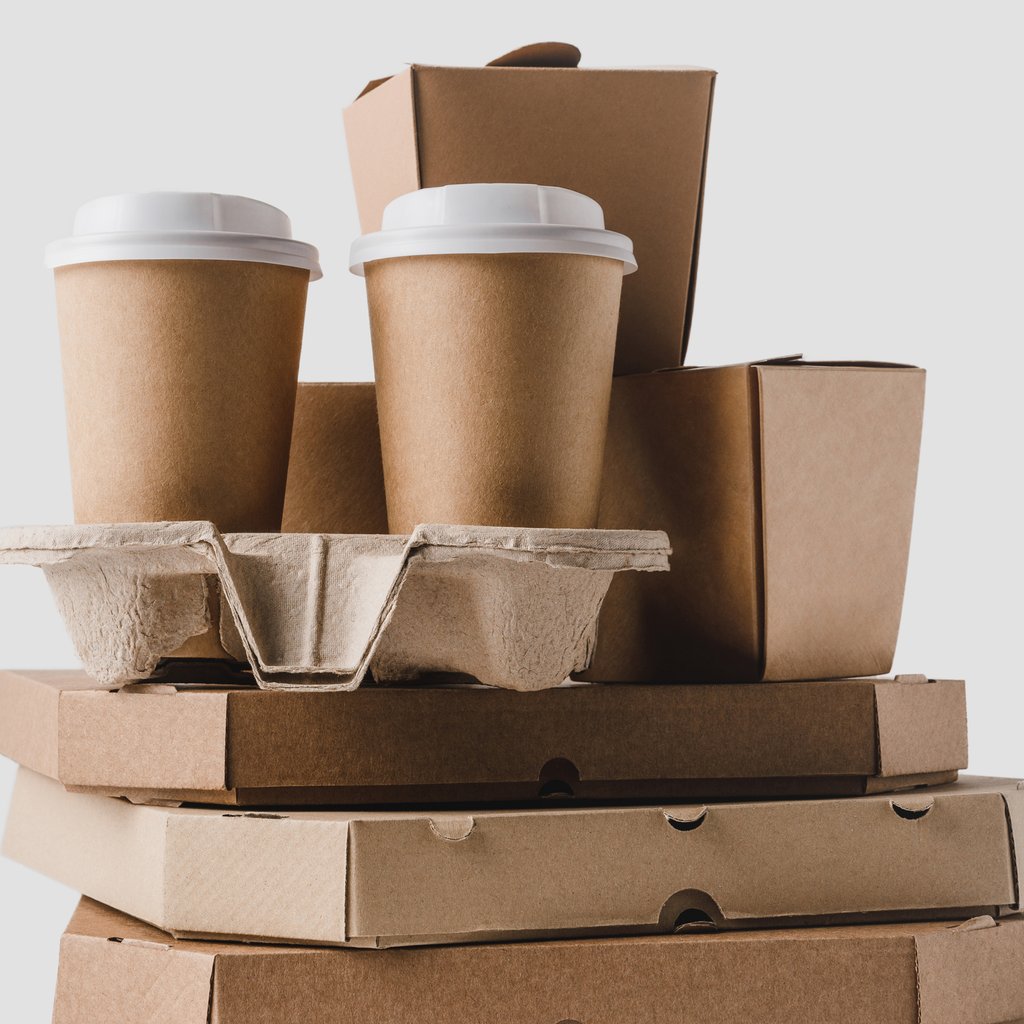
# 6 Bioplastics
While they are indeed manufactured from starchy agricultural by-products (example from corn, potato, etc., soy protein, cellulose, and lactic acid), if they end their life anywhere other than composting industries, they cannot decompose, and in the ocean environment especially have the same negative impact as conventional plastics. They don’t depend on fossil fuels for their raw material but use them for all the energy in manufacturing and transporting (acceptable for long-term usage, but a waste for single-use).
# 7 Aluminum Foil
It is a natural resource and while abundant, not infinite, and requires energy to extract and process. It takes energy to extract and process the metal. And though aluminum is in abundant supply, no resource is infinite. Fortunately, it can be melted and recast over and over without quality loss (unlike plastics), as long as there is a local recycling program for aluminum [2].
Have you ever wondered why takeaway food packages are designed the way they are? Have you ever wondered if the packaging in your hand is healthy?
# Takeaway taco packaging
Packaging manufactures will specialize the taco packaging with three tacos per box. The benefits of this packaging are two-fold: presentation and separation. Contents will stay upright and not spill. Specialized separators keep individual tacos from sticking to one another and allow consumers to remove them one at a time.
This box type can also be used for other foods such as a small order of nachos, guacamole, salsa and other condiment containers, and side salads. This packaging is ideal for Mexican-style restaurant take-out orders, as well as food trucks selling to customers on the go.
# Takeaway burger packaging
The disposable take-out box for burgers is a perfect product for the foodservice industry, including catering services and food trucks for takeaway packaging.
Its hard, cardboard construction is an ideal way to isolate the food, so it stays warm and fresh. The structure allows the food to remain intact. Thanks to the practical lid, the burger box will remain shut tightly.
# Takeaway crepes packaging
The common design styles of crepes takeaway packaging are inverted triangles, which are mainly to improve the customer’s sense of use. The inverted triangle design allows customers to taste fresh pizzas at any time and anywhere they want.
For the complete set of crepes, we generally use a kraft paper box to pack them in one serving or individual packages. The household packaging method generally packs the entire pancake in a carton; the individually packaged pancake design combines the size and weight of each pancake individually, which can also help customers solve the problem of distribution.
And now, in order to save takeaway packaging materials and make the takeaway packaging more eco-friendly, many crepes takeaway packages have also been designed for a multi-purpose situation. Not only can they be filled with crepes, but also a beverage card slot and ingredient card slot are designed. Takeaway packaging can complete the packaging requirements of the entire takeaway package, which saves the materials and greatly improves work efficiency.
# Takeaway cocktail packaging[14]
Unlike on-site consumption, takeaway packaging sales require you to be reactive and to know how to serve the order quickly. The customer is just passing through and may sometimes wait for their order in a spot that is not always very glamorous or comfortable.
Pre-Batched Cocktails (i.e. cocktails partly or totally prepared in advance) allow us to meet the need for fast service without neglecting the preparation quality. In fact, the most sophisticated cocktails lend themselves very well to batch preparation. Precise measurements of alcohol and other components of the beverage can be carefully planned, as can the storage temperature.
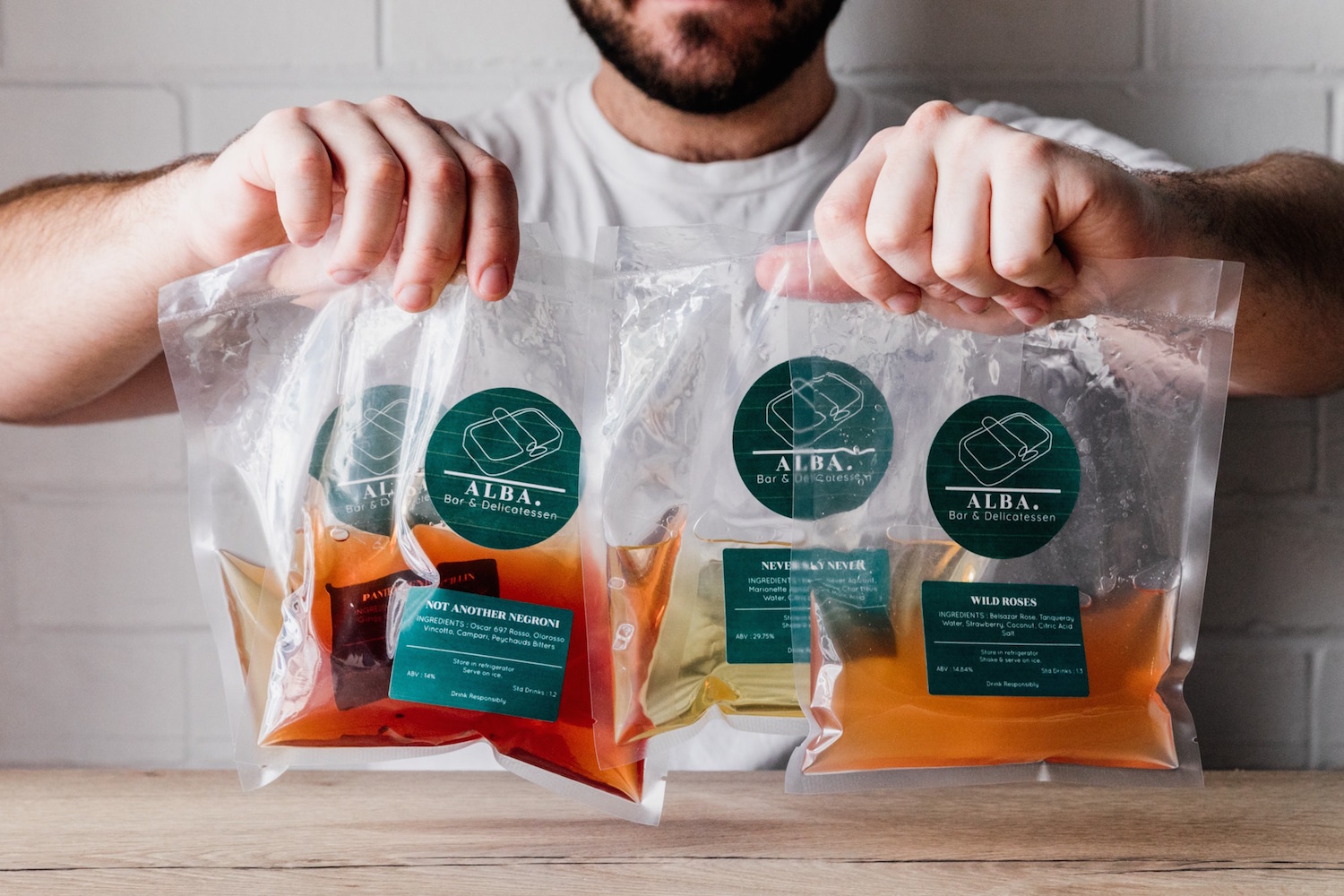
The same applies to the clarification method. This technique consists of removing undesirable particles from the ingredients of the recipe, leaving the liquid clear, thanks to the use of gelatine, agar-agar, coffee filters, or milk. The clarification also allows you to obtain a perfect balance of aromas; the flavors are enhanced. It is then a process that is favorable in every way to the takeaway packaging of cocktails. By filtering all the ‘solids’ from a mixed beverage, the result is perfectly smooth and lasting. That way there is no risk of the cocktail breaking down into separate layers over time. Clarification is perfect for preparing mixtures in advance and offering a speedy takeaway packaging service.
Spout pouches: the go-to choice for takeaway cocktails
There are many benefits of this genius type of flexible packagings, such as ease of filling, reduced spillage, and minimized waste, many bars are turning to spout pouches as a way to package ready-mixed cocktails or recipe packs customers can use to fix their own drinks.
In addition to allowing customers to squeeze out up to 99.5% of its contents, a spout bag is also incredibly economical for space. Compared to clunky bottles or cartons, flexible drinks packaging is perfect for easy storage and freezing. Plus, cocktail mixes packaged in spout pouches are much more convenient to transport, making the life of delivery drivers easier.
Takeaway packaging UK
In 2018, the UK took steps to become a world leader in sustainable packaging. With an investment of £60 million, the government has called on innovators to develop packaging which will reduce the impact harmful plastics are having on the environment.
Following the growth of the fast-food industry over the last three years, it’s expected to be worth a whopping £9.8bn by 2021. With over 26 thousand independent fast food outlets already operating throughout the UK, research firm MCA Insight confirms fast food dominates service-led restaurants and they predict the foodservice delivery market will soon outperform the overall UK eating out market, with further substantial growth opportunities.
With the highest concentration of fast food outlets on UK high streets in a decade, and today’s consumer more eco-conscious than ever, the packaging used to serve up takeaway or delivery food, will be under scrutiny from the consumer. Today we are even more aware of the negative impact single-use plastics have on our environment, and very few of us ignore it. [3]
Takeaway packaging Australia
The Australian Packaging market was valued at 28,647.7 million units in 2016 and is estimated to grow at a CAGR of 1.8% to reach 31,365.3 million units in 2021. Rigid Plastics is the largest packaging type accounting for 8,608.7 million units in 2016 and is estimated to witness a CAGR of 2.4% during 2016-2021, while Flexible Packaging is the fastest-growing pack material with a CAGR of 2.6% over the forecast period. Busy and time-starved consumers in Australia increasingly prefer packages that offer convenience benefits through small-sized, on-the-go, and easy-to-use pack formats.
Since the national public health order forced every restaurant and café to restrict operations to pick-up and takeaway, businesses across Australia have been quick to adapt so that they can stay open amid the COVID-19 pandemic.
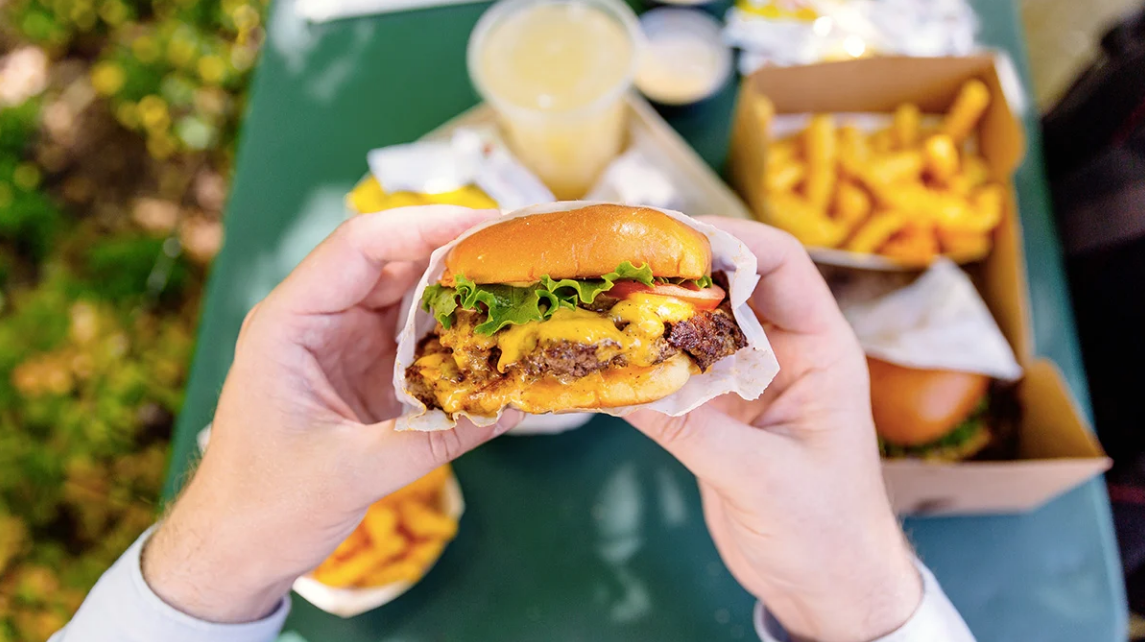
The rigid packaging has become the most popular form of food takeaway packaging in Australia right now as list below:
Chip cups
Snack boxes
Cardboard food trays
Hamburger clams
Foil containers and trays
For starters, they help keep food secure. For instance, hamburger clams help to restrict movement and ensure the ingredients stay intact.
Secondly, they’re easy to take with you on the go to either consume or reheat later.
Thirdly, venues can implement their unique brand onto the packaging, making it stand out and easy to recognize. Finally, most rigid packaging like plastic, cardboard, and foam can be recycled, so they’re a bit eco-friendly.[4]
Restaurant takeaway packaging
As social distancing becomes more prevalent, many restaurants and cafes are beginning to offer takeaway packaging and food delivery services for the first time.
You Need to Make Smart Decisions at Your Restaurant Takeaway Packaging
The right restaurant food packaging helps keep your food warm, intact, and ready-to-eat from your kitchen all the way to your diner’s door.
COVID-19, many restaurants closed their dining rooms and pivoted to takeout and delivery, using tools like TouchBistro Online Ordering to keep both staff and customers safe. In fact, since the pandemic hit in March of 2020, online ordering rose by more than 25%, with 78% of consumers ordering online as frequently or more often than before.
And among those ordering takeout and delivery, 84% agree that takeaway packaging is an important consideration when placing an order. For restaurants – especially those that just added an online ordering system – this means that the right takeaway packaging is absolutely essential to getting customers and keeping customers. [5]
How to choose your takeaway packaging
Takeaway packaging offers a hygienic solution to help businesses continue trading during these tricky COVID-19 times. Choosing the right packaging solution for each dish is the key ingredient to successful home delivery.
# 1. Prioritize good design.
Prioritizing good design and functionality will ensure your food looks and tastes as good at home as it does for sit-down service. Takeaway packaging that invites the customer to simply remove the lid and eat directly from the bowl or container avoids double handling and means the food stays warm and is ready to eat immediately. The pre-prepared meal delivery industry does this very well.
#2. Try sugarcane pulp bowls and containers
Sugarcane pulp (baggage) takeaway packaging is a durable and flexible material that can be molded into any shape and size making it perfect for foodservice packaging. Check out our takeaway range with two and three-compartment containers, bowls, and sauce cup options – perfect for separating components of a dish for freshness.[6]
Restaurant packaging new trends in Australia
However, during the COVID-19, we see many businesses struggling to cope and thinking of ways to keep going in these difficult times, but people are still trying the best to ditch single-use plastic. Thus Australian start-up launched a new system allowing people to use reusable crockery and return them to any participating outlet.
The sustainable scheme aims to dramatically reduce the amount of waste being sent to landfills by replacing single-use takeaway containers with reusable plates and bowls.
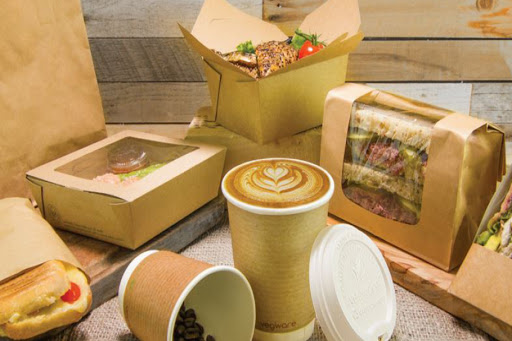
It works by distributing long-lasting stainless steel bowls and cups to participating restaurants and cafes, who charge customers an AUD$6 (£3.16) deposit to take them away – shoppers can then return the packaging in exchange for their deposit after eating or keep the container if they are willing to pay for it through their deposit.
Bowls and cups can be returned to any participating restaurant or café, meaning consumers do not have to wait in one area while they eat.[7]
Catering disposable takeaway packaging
Takeaways packaging often comes in plastic food containers with disposable utensils. They’re a big part of the plastic pollution in our waste system and in our seas.
Takeaway food is more popular than ever. Almost all cafes and restaurants now offer takeout and/or delivery options for meals, snacks and drinks are far more than they did 50 years ago.[8]That increase has coincided with the easy availability of cheap, plastic food containers, cutlery, and other utensils.
It’s sometimes called disposable tableware: everything from paper plates to tin foil trays, see-through microwaveable tubs, and foam burger boxes, and all kinds of single-use forks, knives, spoons, stirrers, and straws. The world is literally awash with it all nowadays, and more and more of it is plastic. Even if some of these items are made from recyclable plastics, they rarely get recycled. And the sheer volume has made the whole idea of disposables clearly unsustainable.
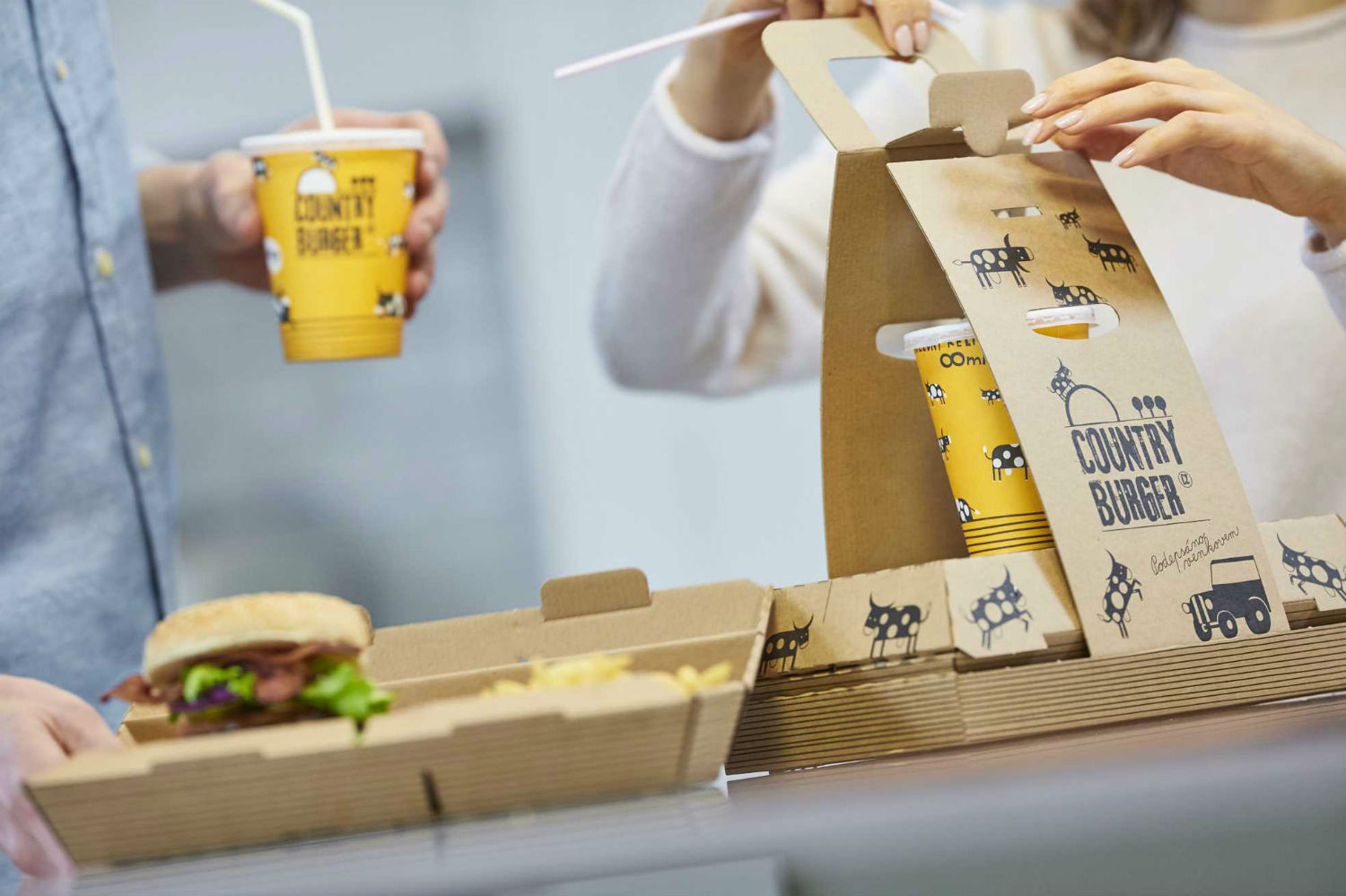
In the UK alone they use and throw away billions of disposable food containers and utensils every year, according to a new report by Eunomia for Friends of the Earth. And as we know, disposing of them doesn’t mean they disappear. A lot of disposables are landfilled, blown, or washed into waterways or end up as yet more plastic pollution in our rivers and oceans.
Therefore, people may do thinks every takeaway packaging be more eco-friendly ways, and we may choose to used more green packaging like disposable packaging, but when we using disposable packaging, one often wonders if it’s a sustainable choice for the environment. What if your disposable packaging material was organic or made of biodegradable materials? While you should always check for different kinds of materials available in the market before making a purchase.
For the catering disposable takeaway packaging, what kinds of materials are eco-friendly? And what kinds of packaging were commonly used in our life? Let’s discuss more that[9]:
Takeaway packaging Material #1: Plastic plates and trays
These are the most versatile and easily available types of trays and plates used extensively in households and commercial spaces.
Plastic takeaway packaging is the most preferred material by customers, as it preserves the quality and taste of food while protecting it from external contamination. The material is non-reactive to any eatables and hence prevents food from spoiling internally.
Takeaway packaging Material #2: Paper plates and trays
Talking about cheap and decorative, paper plates are a buzz at parties since childhoods. From serving up at tea stalls to hors d‘oeuvres at luxury events, paper plates are used by all. Due to their essential features of being attractive and cheap, paper trays are extensively used as serving trays, especially in homes, eating joints, and even at business feasts.
Takeaway packaging Material #3: Bagasse plates and trays
It is 100% biodegradable and can be turned into compost. Bagasse may sound too earthy, but they make for some very tantalizing plates. Bagasse trays are popular as they are big, look good, and bear weight as well.
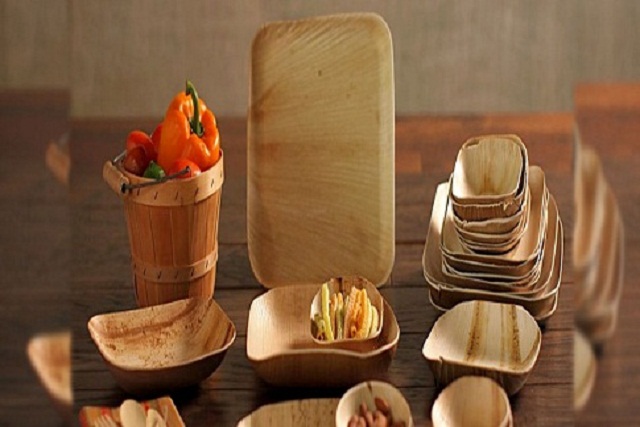
Takeaway packaging Material #4: Areca leaf plates and trays
Areca leaves are sought from Areca palm trees (commonly known as Supari trees) when they fall to the ground naturally. These leaves are compressed to shape as plates, trays, or bowls, according to the specifications of the product. Areca leaf products do not require any added chemicals while manufacturing nor do they give out any unnatural odor post-production. Material is very close to nature and yet very feasible for daily use.
What should takeaway outlets do?
Food outlets can encourage container re-use by offering discounts for customers bringing their own.
Outlets should ask customers whether they actually want/need cutlery when buying their food or drink, not just provide it automatically. And maybe keep cutlery and utensils out of sight or easy reach, so customers don’t just grab them without thinking. They definitely shouldn’t be offering disposable containers or utensils to customers eating on the premises.
If outlets are providing single-use items, they should choose ones with as little plastic content as possible. And only the types of plastic that are easily recyclable – at the moment that usually means PET or PP, recycle codes 1 or 5 [10]. But clearly, the focus should be on keeping plastics out of the landfill and stopping them from polluting our streets and ending up in our rivers and seas. That means completely avoiding the use of these single-use plastics.
Usually, wherever milk and sugar etc are added to hot drinks at the point of sale, it should be possible to provide metal, washable reusable stirrers at that point, rather than throwaway ones.
There are a few quick wins every restaurant offering delivery or takeaway packaging can put into practice in no time at all:
– Stop automatically adding handfuls of ketchup, soy sauce, or other packets of condiments to your takeout. It’s better to ask the customer whether they even need or want condiments and, if so, use them in bulk.
– Restaurants often include (plastic) utensils, straws, and napkins in their deliveries. Customers who’re eating your meals at home most definitely don’t need all that extra stuff. There are delivery platforms such as Deliveroo already asking the customer whether cutlery needs to be included. This is a great practice and it may as well be extended to straws, napkins, and other bits and bobs.
– Remove any excess packaging or wrapping. Instead of putting your meal in a box, then wrapping it in foil to seal it, before finally putting it in a (plastic) bag, ask yourself if this is really necessary to keep the meal ship-shape or if you might be going a bit overboard.
– Your food has been ordered online, which means your customers found your online menu – or at least we hope that’s how it happened. There’s no need to put a paper menu in your delivery meal.

Recyclable takeaway packaging
Since the outbreak of the global epidemic, the takeaway packaging industry has been hit hard by the growing demand for food delivery, while the issue of takeaway packaging pollution has also increased.
People are also pursuing environmentally friendly packaging methods while increasing demand. In recent years, many pollution problems have been effectively curbed after Australia’s plastic restrictions have been issued. However, there are still have six major pollution waste issues that affect Australia’s environmental protection. Nearly half of these pollutants will also appear in the takeaway packaging that comes from our daily demand. Thus, the government deliberately made an investigation report and proposed new solutions:
Six problematic plastic waste types:
Like many nations across the world, Australia has a problem with the amount of plastic waste it generates. During the 2017-18 financial year, the country produced a total of 3.4 million tonnes of plastic waste. Of this total, only 9.4% was recycled.
The Australian federal government has set itself a target of recycling or composting 70% of the plastic packaging waste it generates by 2025, but plastic reprocessing would have to increase by up to 400% in order to achieve this goal.
A new report, published by the environmental charity, has outlined actions that could halve this figure.
Commissioned by WWF-Australia and prepared by consultancy Boston Consulting Group (BCG), it sets out a list of recommendations for addressing the six most problematic types of single-use plastic.
How Australia solve these six problematic plastic waste types:
Plastic bottles
According to WWF-Australia’s report, this item is also the most commonly-used plastic product in the country, with the report stating that a total of 325,000 tonnes were consumed in 2017-18.
It adds that 35% of those were recycled – the highest rate for any of the six plastic types – while 12% were leaked into the environment and 53% went to landfill.
Alongside this, the plastic bottle is the only product type highlighted by WWF-Australia that has disposal regulations in place across all of the country’s six states and two territories.
However, virgin materials are predominantly used in the production of more than one billion water bottles bought in Australia every year.
One way of reducing the amount of single-use plastic bottles is through reusable beverage containers.
In order to encourage people to use more of these, the report recommends state governments implement a plan to invest in water refill stations for all new public space developments, as well as reviewing existing spaces to ensure there is sufficient availability.
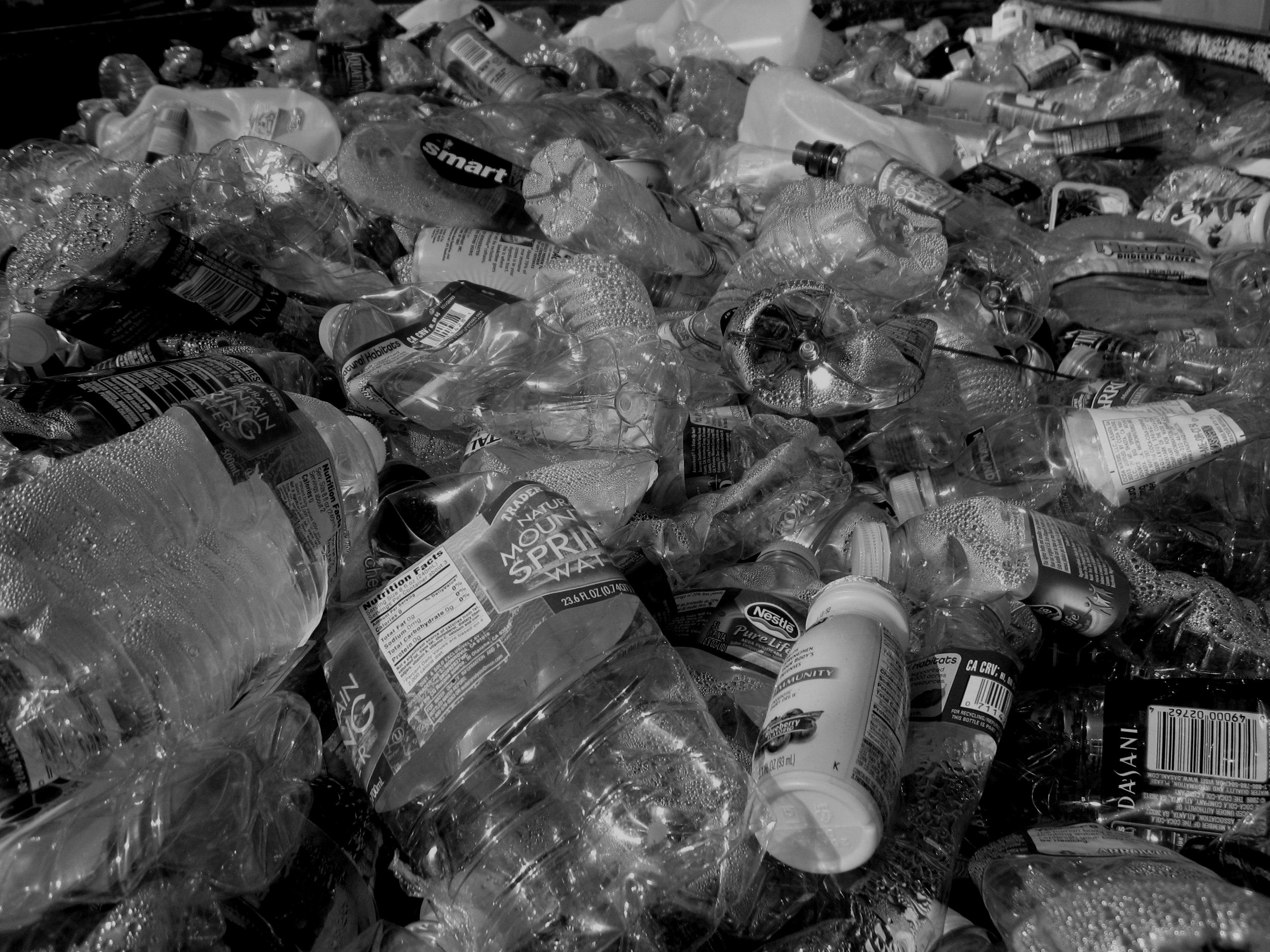
Soft scrunchable plastics
In the WWF report, soft “scrunchable” plastics fall into three categories: food wrappers, thick plastic bags, and balloons.
Between 2018 and 2019, a total of 400,427 “scrunchable” plastic litter was collected, accounting for about 11% of all debris. The organization also estimates that 274,000 tonnes of this type of item were consumed between 2017 and 2018.
Of this waste, only 1% was recovered, with 10% leaked into the environment and 89% going into landfills. Typically, “scrunchable” plastic food wrappers are difficult to recycle, often ending up in landfills when thrown away.
As packaged food in Australia is often consumed outdoors, it’s also in the urban environment and is one of the most commonly littered items found in clean-ups.

In order to reduce this problem, the report suggests specifically targeting unnecessary food wrap plastic and designing food wrappers so they’re 100% recyclable, or made from an alternative environmentally-friendly.
Takeaway packaging material like dissoluble or edible food takeaway packaging. In order to do this, it recommends providing grants and other incentives to scale up the innovation of non-plastic, sustainable, and environmentally-friendly alternatives.
Disposable foodware
Of all the littered plastic waste items collected by Tangaroa Blue, Clean Up Australia and Keep Australia Beautiful between 2018 and 2019, 217,731 were defined as foodware products.
We can split disposable foodware into two categories: utensils, straws and stirrers, and cups, lids, and bowls.
Overall, between 2017 and 2018, 25,000 tonnes of disposable food ware products were consumed in the country, of which 2% were recovered, 11% leaked into the environment, and 92% sent to landfill.
Over the course of a year, 3.5 billion straws are used by Australians, making them one of the most commonly found items in litter collections. It’s also estimated that more than 7 million plastic utensils are used every day in the country.
This type of disposable single-use plastic food ware also tends to be difficult to sort and recycle, due to size, shape, and material inconsistency.
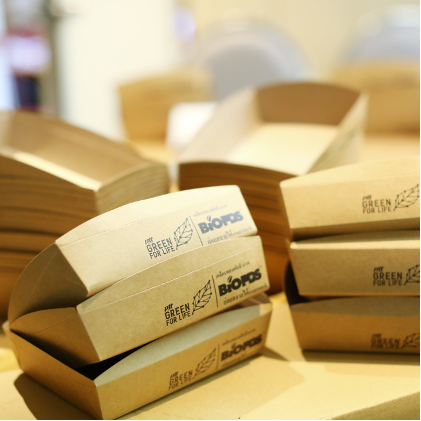
Disposable packaging and containers
Australia focuses on two types of disposable packaging and containers, these being food and expanded polystyrene (EPS) based goods containers. Between 2017 and 2018, 58,000 tonnes of disposable takeaway packaging containers were used in Australia, 15% of which was recovered, with 11% leaked into the environment and 74% ending up in a landfill.
In terms of food containers, most used in supermarkets and takeaways are completely or partially composed of plastic, and often end up in landfills or the environment. This coincides with the rapid growth of takeaway food beverage services over recent years, facilitated by increased food delivery services.
In order to tackle the problem of takeaway packing, the government recommends businesses adopt reusable container models wherever possible, either through consumers bringing their own containers, or businesses providing them.
It also suggests grants and other incentives to support businesses to innovate container reuse and return schemes, and plastic-free design alternatives, as well as introducing a levy on plastic food containers at the point of sale to discourage use.
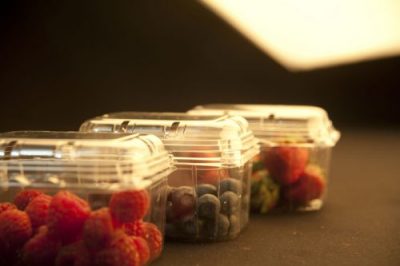
Cigarettes
Of all the littered plastic items collected by Tangaroa Blue, Clean Up Australia and Keep Australia Beautiful between 2018 and 2019, 21% was cigarette waste – higher than any other culprit listed in the report. In 2017-18, 2,200 tonnes of cigarettes were consumed.
Half of this amount was leaked into the environment, while the other 50% became landfills. It’s estimated that eight billion cigarette filters are littered in Australia every year, making it the most littered item in the country.
These filters are typically made from non-biodegradable plastic and can take between 12 and 15 years to break down.
The government will try to banning smoking in public and national parks, beaches, and waterways, as well as increasing fines for people littering cigarette filters more generally in takeaway packaging.
Microplastics
Microplastics are small plastic pieces less than five millimeters long that cause significant damage to natural habits and wildlife. In 2017-18, Australians used 100 billion microbeads – a common form of microplastic.
The entirety of these microbeads was leaked into the environment.
Microplastics could have negative health benefits for humans as well as animals, with one 2019 study by the University of Newcastle in Australia discovering that an average person could be ingesting approximately five grams of microplastic every week in their food.
There highlights two types of microplastics: microbeads – small plastic beads typically found in personal care and household cleaning products – and microfibers, which are tiny plastic threads shed from synthetic fabrics.
In order to tackle microbeads, WWF-Australia suggests governments introduce legislation to ban them from being imported, manufactured, and sold in the country.
As for microfibres, the report recommends phasing in product standards to reduce shedding from clothes after the point of sale, as well as introducing pre-washing standards to minimize pollution generated by consumers.[11]
Recyclable takeaway packaging trends now in Australia
Takeaway coffee cups are estimated to be the second-largest contributor to rubbish waste after plastic bottles, and plastic straws have become one of the biggest contributors to sea pollution. So it’s no wonder that consumers are expecting the food and beverage industry to lead the charge on the war on waste. In fact, in Australia, 32% of local consumers prefer products that are sold in environmentally-friendly packaging and it will be fully expected that number to increase.
Across Australia we’ve seen a number of brands and small businesses answer the sustainability cry – offering discounts to customers who bring their own coffee cups, swapping plastic straws for paper and even big-name soft drink brand Coca-Cola has announced that it will increase the quantity of recycled plastic in its bottles to 50 percent by the year 2020.[12]
Now you may think about whether I can recycle those plastic takeaway packaging? But when you can’t even reuse plastic takeaway packaging containers, what about recycling them?
Thus, it comes back to the recycling symbol and number indicator on the base of the product. Here’s what each one means[13]

So, not all plastics are created equal. Truly recyclable cups are being made, but this option comes at a price and not all cafe owners are willing to wear that cost.
Some disposable coffee cups claim to be recyclable, some claim to be compostable and others are sold as biodegradable, but Mr. Fine said these claims could be misleading for a number of reasons.
However, in order to solve the increasing demand for takeaway coffee cups in Australia, some local enterprises have studied a new type of eco-friendly takeaway coffee cup, which can not only be recycled but also be environmentally friendly.
Detpak, an Australian-owned specialist paper, and board takeaway packaging manufacturer has partnered with Smart Planet Technologies to create the RecycleMe cup. The cup is easy for consumers to recycle using the existing paper and cardboard recycling stream, and it provides commercial returns for the paper recyclers that aren’t available with existing coffee cups.
This cup comes in 8oz and 12oz sizes and will be used for one week starting on the 14th of August. Dedicated blue bins will be available at each trial location for customers to dispose of their lids and empty cups. The cups will then be baled up and taken to a paper recycling facility for processing into material that can be turned into new paper and cardboard products.
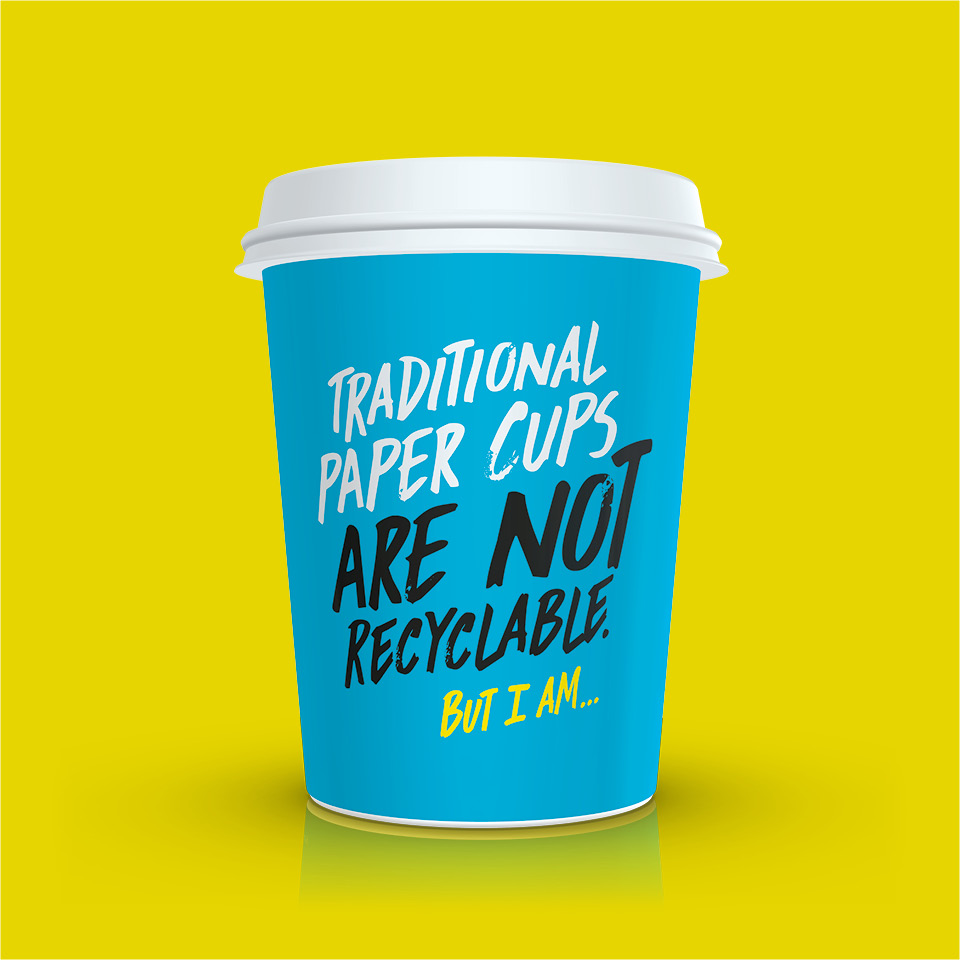
Takeaway food packaging design & ideas:
With the increase in demand for takeaway food packaging, the design of takeaway packaging has become a hot topic of active discussion.
Take-out packaging doesn't usually have a very long lifespan, since it is made for to grab and go, then ends up in the trash shortly after. However, as they're being carried out of a restaurant, these paper bags, boxes and cups are like walking advertisements for a brand.
How to make takeaway packaging design durable and give customers the deepest first impression? For this reason, let’s take a look at the most attractive takeaway food packaging design in recent years:
WR/BR by Viktoria Mannsberger (Austria)
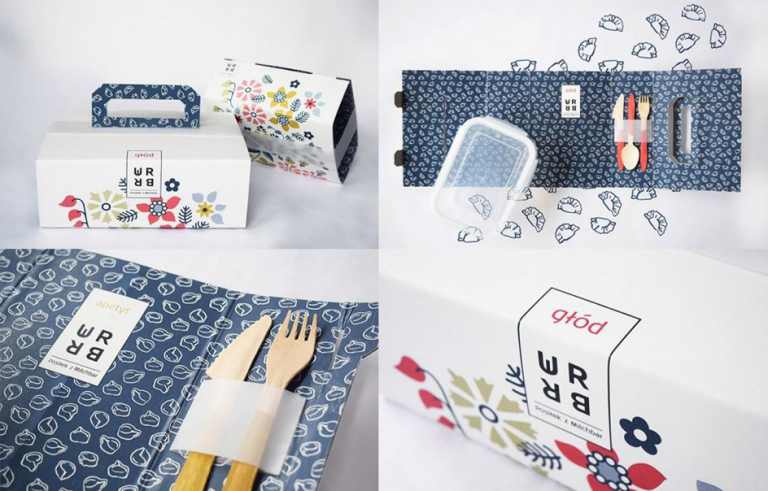
The All-in-one’s Basil Leaf Café, designed by Samantha Levine (USA)

Sandwich or Salad by MASIF agency (Colombia)
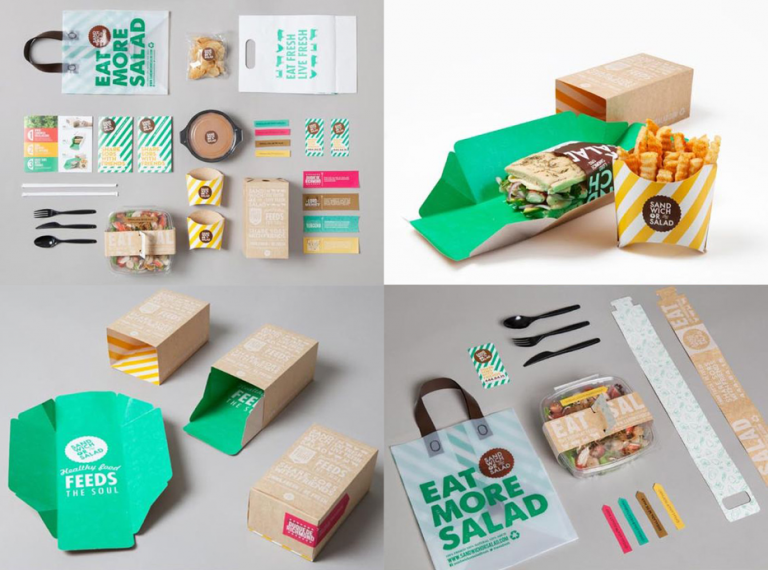
Pablo & Rusty’s Coffee roaster by Manual agency (USA)
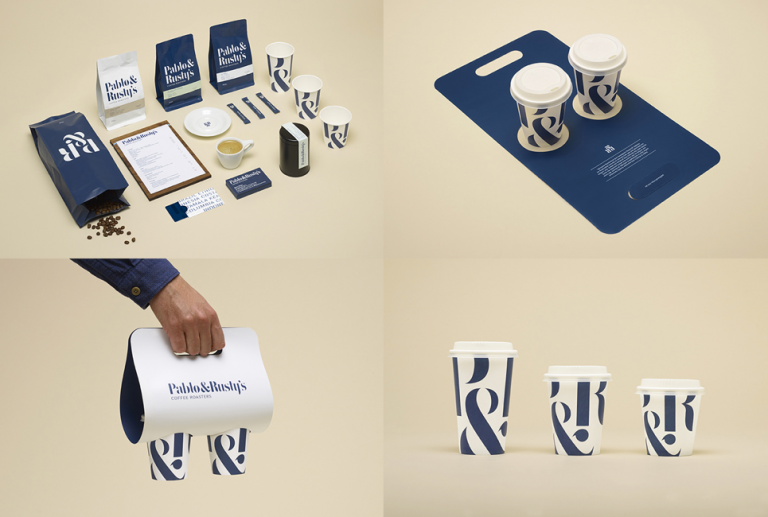
Kino by Gustav Karlsson (Sweden)
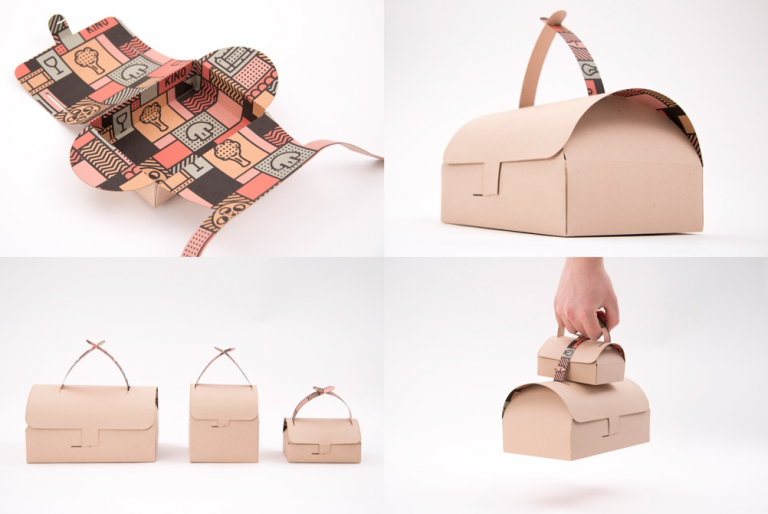
Munkar by Emelie Johannesson & Oliver Sjöqvist (Sweden)
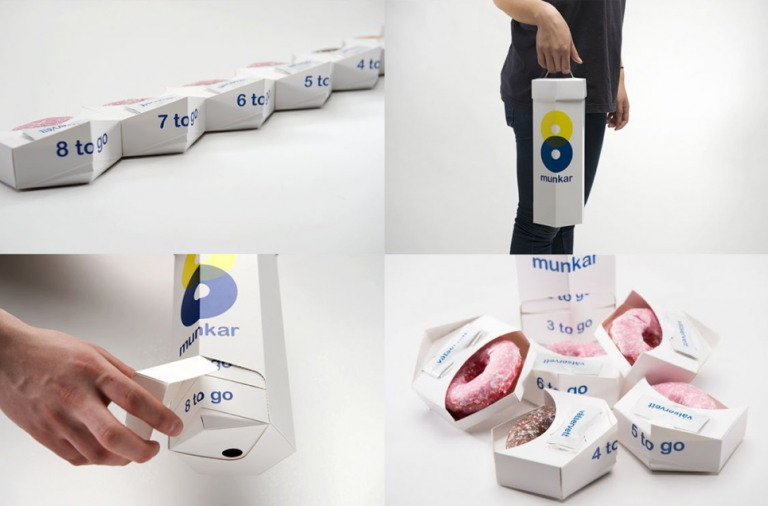
Tips about design trends of takeaway food packaging
#1 Simplicity with a touch of color
Minimalistic takeaway packing design is quite the trend today—and for good reason. Consumers are bombarded with visual information at every step of the purchasing process, so much so that many don’t even notice the bells and whistles of takeaway packaging design.
The clean, simple aesthetic is all about minimalism, and the takeaway packaging represents this accurately.
however,in order to raise the attention of customers, more and more advertising messages will be printed on top of the takeaway packaging, and this behavior may do harm to the customer experience of the brand. Thus, it may be a good choice for you to consider this minimalist takeaway packaging design style.
#2 Reinforces Your Brand Identity
The takeaway packaging is another brand touchpoint that helps you connect with customers through the smart use of color, design, and copy. If your restaurant is known for having a quirky sense of humor, you could create takeaway packaging that reflects this unique brand personality.
#3 Showcases Your Values
Whether it’s a commitment to sustainability or you’re trying to raise awareness for important social issues, your takeaway packaging can convey what your restaurant values. For instance, biodegradable takeaway packaging is an easy way to show your customers that you’re committed to protecting the environment.
#4 Be sustainable (and differentiate yourself)
Whether you run a café, takeaway shop, or mobile food truck, it’s important to provide eco-friendly takeaway packaging options to your customers. Choosing to serve your takeaway food and beverages in eco-friendly packaging is a great way to reduce your carbon footprint and show you’re doing your part to save the environment.
#5 Tell your story (and give your brand a narrative)
The takeaway packaging is another brand touchpoint that helps you connect with customers through the smart use of color, design, and copy. If your restaurant is known for having a quirky sense of humor, you could create takeaway packaging that reflects this unique brand personality.
Using collage-based illustrations, you can tell the brand’s story tracing the food from its source to your target clients.
Why is food takeaway packaging important?
In addition to practical, sturdy, and environmentally friendly packaging, you hope that as people’s awareness of consumer awareness continues to increase, you want to convey your brand’s message of concern for the earth.
In 2018, Australia set a national packaging target for 2025. These goals focus on life packaging, they are:
By 2025 100% of packaging is reusable, recyclable, or compostable
By 2025, 70% of plastic packaging will be recycled or composted
By 2025, an average of 50% of recycled content nationwide will include packaging
Unfold packaging gradually by 2025
The most important part of environmental protection is the materials used to produce product packaging. Some of these materials require recycling centers that meet specific standards to adequately process packaging. This is something to consider when selecting products and implementing a recycling library in your business.
Takeaway supplier in Australia
The worth of Packaging industries and take away food packaging suppliers and take away boxes suppliers, in Australia is approximately $10-10.5 billion which is around USD300 billion at an international or global level.
When it comes to specific food and beverage domains it covers about 65 to 70 percent of all estimated Australian takeaway packaging production. These are not surprising facts as lifestyle and routine across the world including Australia has become busier and more challenging. This is leading to the incredible growth of takeaway packaging suppliers’ industries. People are more after instant gratification especially when it comes to eatables, beverages, and even snacks. To avoid the time utilization in cutting, cooking, and serving the stuff for themselves everyone prefers to have ready-to-cook food.
To maintain such a lifestyle and requirements and convenience of the customer. To achieve such a level of customer satisfaction takeaway packaging technology has been enhanced in a way to create products that are easy to open, distribute/share, reseal, and which can keep food fresh and healthy for a long time. In addition to this these products are light in weight to carry them easily along with keeping their quality and originality.
Packaging Suppliers Australia Covenant:
The environmental factor is the major factor when it comes to the takeaway packaging industry across the world including Australia. This concern builds pressure on all the stakeholders like consumers, suppliers, and the Government itself. To resolve environmental threats, the Australian Packaging Covenant is established (Initially the National Packaging Covenant).
This covenant holds the fundamentals which are used to manage Environment aspects and concerns of takeaway packaging and it is active since 1999. It is applicable and arranged amongst all the stakeholders like the Packaging Supplier Australia industry, consumers, and all governmental bodies. The goal of Covenant is to reach out for 70 percent of the recycling process of all takeaway packaging materials[15].
The types of environmentally friendly food take away packaging
Sustainable, environmentally friendly, environmentally friendly, and/or recyclable packaging is important for many reasons. The amount has increased somewhat.
The most important point is to decide to buy food that is safe, environmentally friendly, and recyclable for food consumption, so as not to landfill the packaging site or affect it.
Here are the types of Environmentally friendly food takeaway packaging.
Kraft paper
This environmentally friendly option is used internationally. It is considered to be butcher paper or kraft paper in appearance, and its name is derived from the German word Kraft, which means resistance and strength. Kraft paper is made from recyclable and compostable wood pulp.
PET and rPET
PET plastic is made of non-toxic, flexible, and most notably recyclable materials. It is the most popular form of transparent packaging, light in weight, and available in a variety of colors.
As far as PET plastics are concerned, RPET is an emerging trend. RPET products are developed from used plastic bottles, which are cut into small pieces, melted, and then used to make a range of products from sweaters to more plastic bottles. The advantage of RPET is that compared to manufacturing PET from scratch, the energy required for production is reduced by 50%, and the benefit of not returning to landfills is greater, which is a huge benefit.
Corn starch
Food packaging developed from corn starch is most suitable for non-liquid foods. These food containers are made from corn and corn plants, which means they are biodegradable, but they must be processed by specific recycling plants that follow strict guidelines to break them down into carbon dioxide and water. These materials are cheap and easy to produce, but it is vital that they have a dedicated collection box for the collection of approved recycling agents.
Glass packaging
Glass is an environmentally friendly material, and its advantage is that it can be used repeatedly without loss of quality or integrity. The most commonly used jars in food packaging are glassware, bottles, and jars. Since glass can be sterilized for reuse, its longevity and reusability are viable options for sustainable food packaging.
Metal packaging
Metal packaging is most commonly used for packaging carbonated and non-carbonated beverages. Commercial packaging of liquids can be included in this eco-friendly list because they can be recycled indefinitely through crushing, melting, and reproduction.
Compostable packaging
This food packaging is made of sugarcane fiber, a by-product of the sugar industry, and an important player in the Australian economy. These products are safe to use in microwave ovens and are 100% biodegradable through strict procedures in approved commercial composting facilities. Immerse yourself in our packaging and handling categories and explore a range of compostable products from trays and bowls to tableware and cups.
But please note that you need a special garbage collection box to store the packaging so that it can be picked up by an approved composting facility in your area.
About PrimePac
At PrimePac, we bring together design experts and brand innovators to create fresh ideas, customized packages, and fully efficient processes in takeaway packing.
We design creative takeaway packaging solutions that cater to a diverse global audience with the in-house knowledge and network of experienced professionals to meet the demands in takeaway packing of every type of client.
From our dedicated sales team and warehouse staff in Australia to the experts at our production facilities in China, all of our employees are guided by four core values at the heart of our business: integrity, innovation, passion, and engagement.
Network
With our team in China and Australia working as one, we reduce inefficiency in takeaway packing so that you deal with one streamlined team from manufacturing right to delivery.
Service support team located in Guangzhou, the manufacturing hub of China, providing rapid response, and local industry knowledge. Warehouse and 3PL network located in Sydney, to provide rapid distribution, and delivery to your customers.
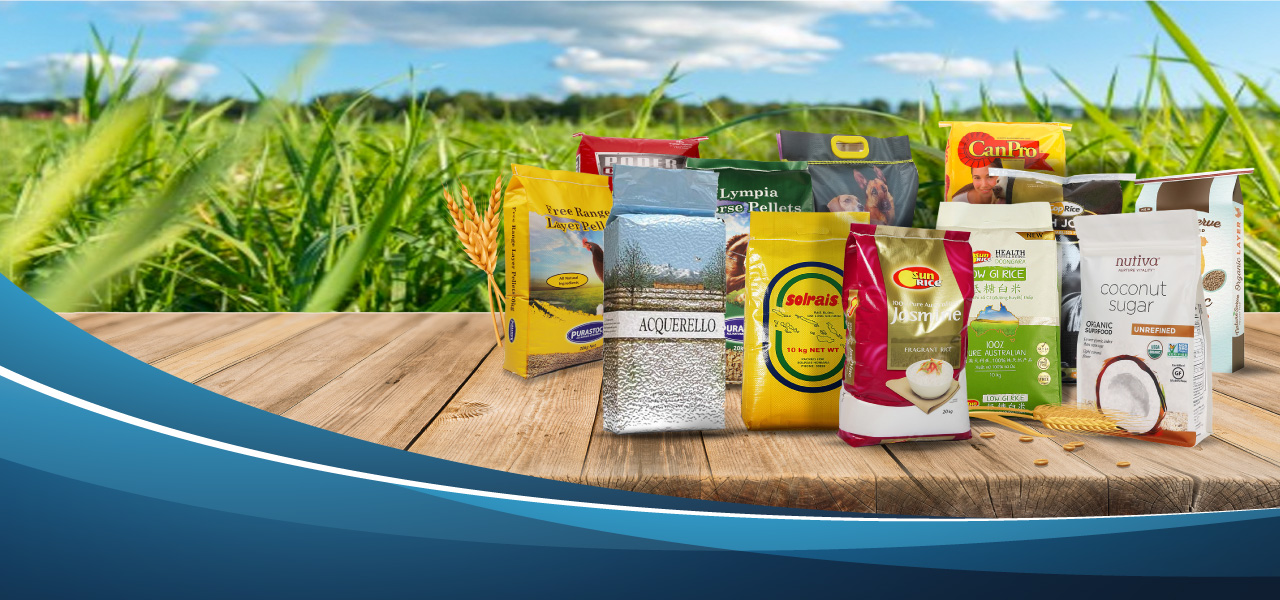
Recycled cardboard and paper packaging
Cardboard and paper packaging materials are very environmentally friendly. From fast food boxes to straws and packaging applications, these materials are easily biodegradable and occupy very little landfill. It is important to check whether the cardboard or paper packaging you are using contains harmful mineral oils or substances that may contaminate food.
